Obliquiminima W. Dong, H. Zhang & K.D. Hyde, gen. nov.
Index Fungorum number: IF558035; Facesoffungi number: FoF 09557
Etymology: – in reference to its neck growing oblique to the host substrate and small ascomata
Saprobic on submerged wood in freshwater.
Sexual morph: Ascomata tiny, scattered, superficial, ellipsoidal to subglobose, black, coriaceous, ostiolate, with a lateral neck. Necks short, black, cylindrical, oblique to the host substrate. Peridium comprising several layers of dark brown to black, thick-walled, compressed cells of textura angularis. Paraphyses tapering towards the apex, dense, hypha-like, septate, unbranched, hyaline. Asci 8-spored, unitunicate, narrowly obclavate, slightly truncate at apex, sessile, with a small, refractive apical ring. Ascospores uni- to bi-seriate, oval, narrowly ellipsoidal, straight, aseptate, guttulate, hyaline, thin-walled, smooth, with a thin gelatinous sheath.
Asexual morph: Undetermined.
Type species: – Obliquiminima hyalina W. Dong, H. Zhang & K.D. Hyde
Notes: – Obliquiminima forms a sister clade with a hyphomycetous genus Cancellidium in Cancellidiaceae with high bootstrap support (Fig. 1). Cancellidium is characterized by dictyosporous conidia arising from small conidiophores (Tubaki 1975). No sexual morphs are reported in Cancellidium, thus the morphology between Cancellidium and Obliquiminima cannot be compared. Our multigene analysis supports Obliquiminima to be a new genus in Cancellidiaceae (Fig. 1).
Obliquiminima can be compared to an annulatascaceae-like genus Ayria in having ellipsoidal, aseptate, hyaline, finely guttulate ascospores (Fryar & Hyde 2004). However, Obliquiminima differs in having superficial ascomata, with a lateral neck that oblique to the host substrate, narrowly obclavate asci with a refractive apical ring. In contrast, Ayria has immersed ascomata that become superficial at maturity, clavate asci without an apical ring (Fryar & Hyde 2004). Ayria also has a neck, but which was not described in detail for two species, A. appendiculata and A. nubispora (Fryar & Hyde 2004, Raja et al. 2009). Ayria is placed in Annulatascaceae based on morphology, but it lacks molecular data (Hyde et al. 2020). Sequence data for Ayria are needed to infer the phylogenetic relationships between Ayria and Obliquiminima.
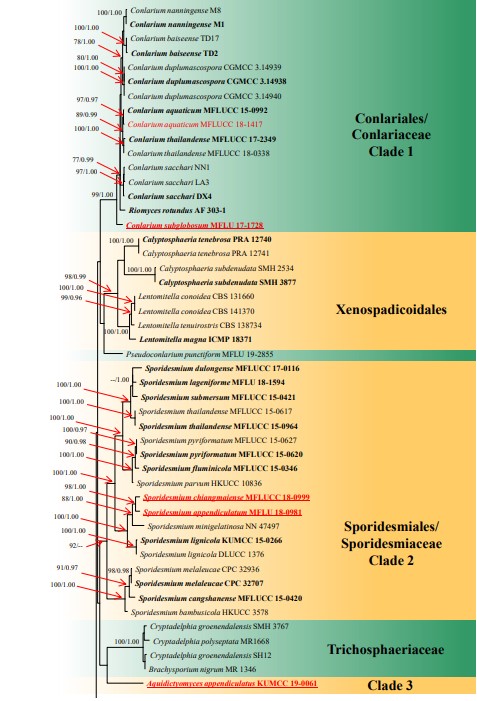
Figure 1 – RAxML tree generated from combined LSU, ITS, TEF and RPB2 sequence data. Bootstrap support values for maximum likelihood (the first value) equal to or greater than 75% and Bayesian posterior probabilities (the second value) equal to or greater than 0.95 are placed near the branches as ML/BYPP. The tree is rooted to Aureobasidium pullulans CBS 584.75 and Dothidea insculpta CBS 189.58. The ex-type strains are indicated in bold and newly generated sequences are indicated in red. The new species introduced in this study are underlined.
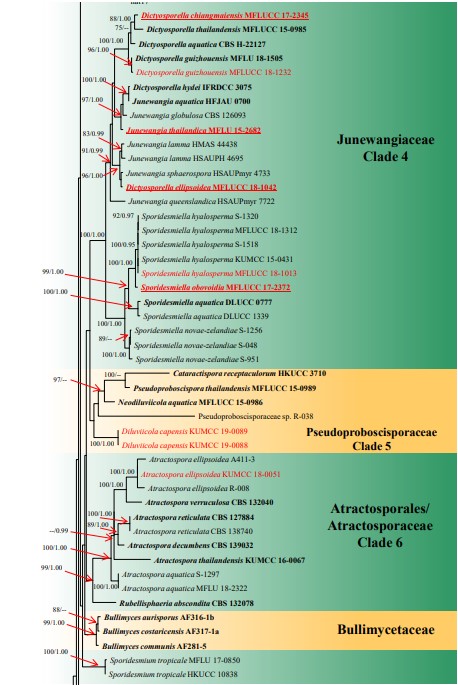
Figure 1 – Continued.
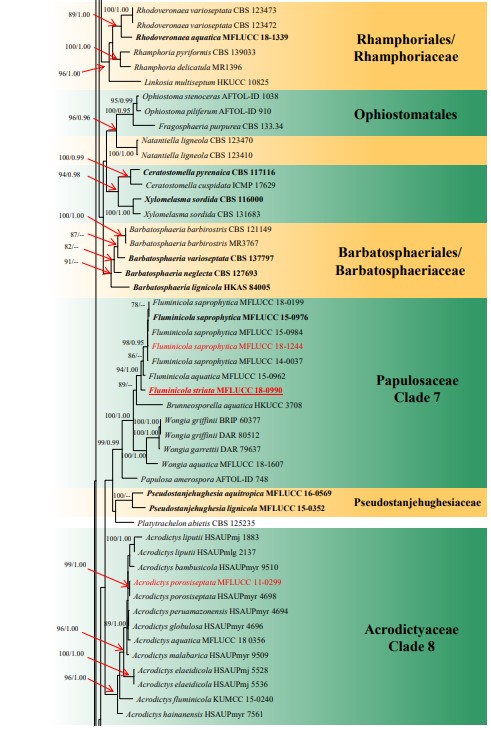
Figure 1 – Continued.
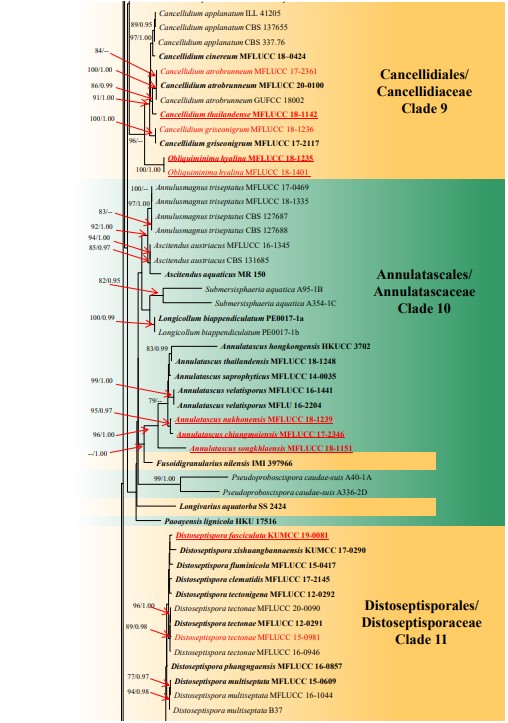
Figure 1 – Continued.
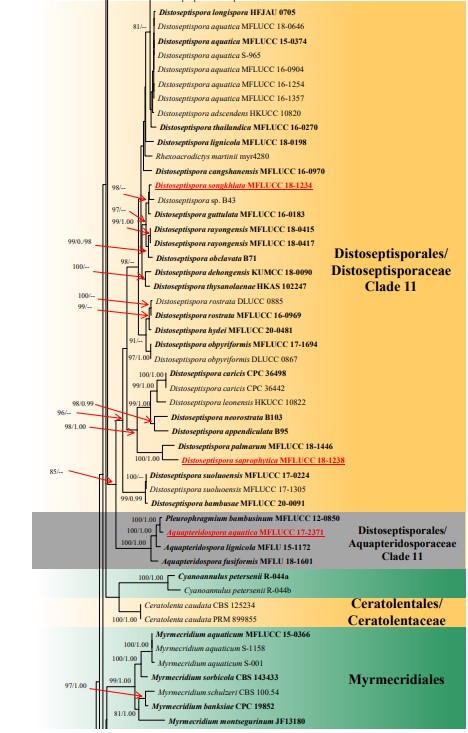
Figure 1 – Continued.
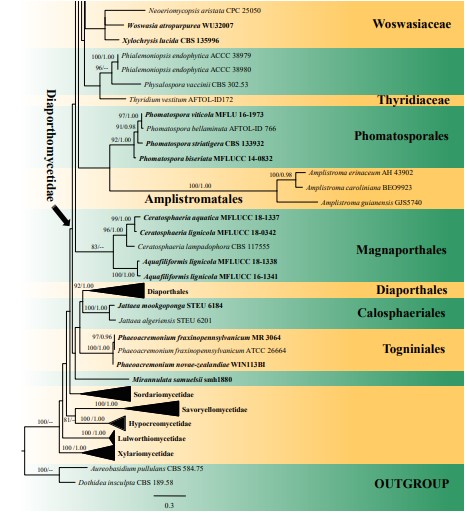
Figure 1 – Continued.
Species
